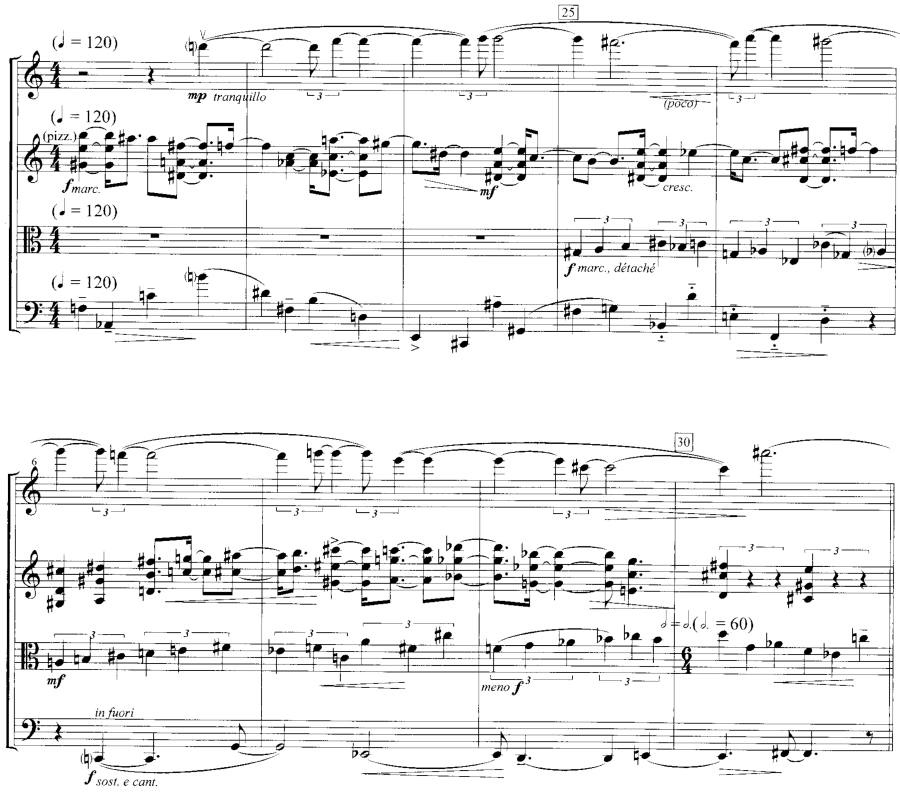Rhythm
| Why am I learning this? You know how to read eighth notes, quarter notes, etc., but rhythm is more than note values; it is the patterning of durations and the grouping of notes, and there are different kinds of patterns and groups. |
Rhythm is the patterning of durations. It is also the grouping of successive notes. Ideas and phrases are examples of rhythmic groups.
History and etymology
Rhythm has arguably always been the primary element of all music everywhere. But ironically, it is only since the late twentieth century that music theorists have studied rhythm and meter as thoroughly as they have studied pitch-related phenomena such as harmony. This focus follows an outpouring of new kinds of rhythm in the twentieth century and increased attention to musical temporality.
The term rhythm comes from the Greek rhythmos for measured motion. This derivation shows the importance of both measure (the relative durations) and motion (the ebb and flow of groups) for rhythm. If someone pays no attention to the relative durations of notes, we say that they have no rhythm. However, if someone plays notes in strict time without regard for phrases and other groups, then we also say that they have no rhythm.
Specific types
Rhythm is generally measured by a beat: a basic pulse with two or three divisions (faster pulses). Some musicians call divisions of the beat subdivisions, but this term is better reserved for divisions of divisions. The term beat can also refer to the time between beat pulses.
Tuplets are irregular divisions of the beat, or irregular subdivisions. The following are the most common:
- duplets: two divisions or subdivisions in the space of three
- triplets: three divisions or subdivisions in the space of two
- quadruplets: four subdivisions
- quintuplets: five subdivisions
- sextuplets: six subdivisions
- septuplets: seven subdivisions
- octuplets: eight subdivisions
Example: Frederic Chopin, Nocturne in F Major, op 15, no. 1 (1832): The opening melody features both eighth-note triplets and sixteenth-note triplets.
Triplets are uncommon in pop music. Much, much more common is a 3+3+2 pattern of divisions and/or subdivisions called a tresillo, which is easily mistaken for triplets (all the more so, since in Spanish it actually means “triplet”).
Example: Paul Simon, “You Can Call Me Al,” from Graceland (1986): The introduction features a quarter, dotted eighth, dotted eighth, eighth rhythm (4+3+3+2).
Sometimes this pattern is further divided into 3+3+3+3+2+2.
Example: Chemical Brothers, “Block Rockin’ Beats,” from Dig Your Own Hole (1997): The song begins with a 3+3+3+3+2+2 grouping of subdivisions.
Supertriplets are three beats in the space of two.
Polyrhythm (cross rhythm) is when the beat is divided in different ways at once, for example triplets against a regular simple division.
Example: One Direction, “What Makes You Beautiful,” from Up All Night (2011): The chorus features divisions of the beat in the melody (“Baby, you”) in cross rhythm with regular triplets in the accompaniment, as well as supertriplets (“light up my life like no-“) in cross rhythm with the beat. The end of the chorus (“beautiful”) falls into a 3+3+2 pattern.
Example: Igor Stravinsky, “Pas-de-Quatre,” from Agon (1953–1957): There is polyrhythm with simple divisions against triplets in mm. 4–6.
Polytempo is when there are different tempi at once, for example 90 beats per minute and 120 beats per minute. Polytempo may or may not involve polymeter (multiple meters at once), and vice versa.
Example: Elliott Carter, String Quartet No. 1 (1950–1951), I, mm. 22–30 (scroll to 1:02). Although all the parts are written in 4/4 with a quarter equals 120, each instrument in effect uses a different note value as the beat: three quarters plus a triplet, five sixteenths, a supertriplet, and a quarter, so there are in effect four tempi.
There are three kinds of rhythm that are characteristic of the music of Messiaen. An added value is where a beat is lengthened, for example by a single subdivision. A non-retrogradable rhythm reads the same forward and backward (the retrograde is the same as the original). A rhythmic cycle is a repeating series of durations.
Example: Olivier Messiaen, “Danse de la fureur, pour le sept trompettes,” from Quartet for the End of Time (1941) (scroll to 25:21): The opening melody features added sixteenth-note values. The quiet section after the opening features a non-retrogradable rhythm in each measure. These rhythms combine into a rhythmic cycle.
A rhythmic group is a series of notes performed as a unit. A group typically has a main point of accent, which can be at the beginning, middle, or end. The most universally recognized kind of group is a phrase, but musicians have widely varying and often vague ideas of what constitutes a phrase, and the situation is made more complicated because phrases are of different lengths in different styles. However, a flexible standard is what can be comfortably sung in one breath.
Example: Norah Jones, “Don’t Know Why,” from Come Away with Me (2002): The verse features four-bar units composed of two-bar phrases. The last phrase gets repeated. The chorus/bridge features undivided four-bar phrases.
Example: Wolfgang Amadeus Mozart, Eine kleine Nachtmusik, I (1787): The introduction has two four-bar units composed of two-bar phrases. Then there is another four-bar unit and a two-bar phrase.
Musicians tend to think of groups larger than phrases as formal rather than rhythmic, because they are easier to measure in terms of phrases than measures. Fundamentally, though, all rhythmic groups are formal, and vice versa.
Further reading
- Stephen Kostka, Materials and Techniques of Post-Tonal Music, Chapter 6
- Miguel Roig-Francolí, Understanding Post-Tonal Music, Chapter 10
External links
The Wikipedia article on rhythm is fairly informative, but it lumps in metrical concepts and uses the unconventional and inaccurate term “irrational rhythm.”
